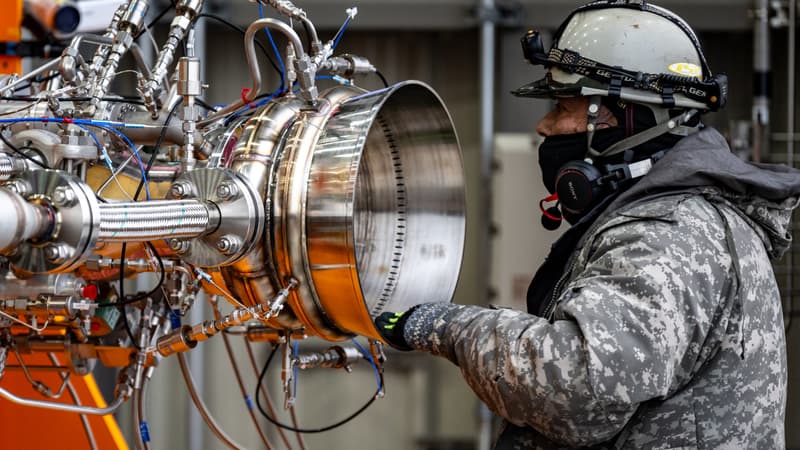Japan is getting closer to carrying out an extraordinary space project. On December 7, the country successfully tested a prototype rocket engine, powered solely by locally produced energy: cow dung.
In this test, a motor propelled a blue and orange flame horizontally about ten meters for a few seconds through the open door of a hangar in the town of Taiki, on the northern island of Hokkaido.
The liquid biomethane needed for the experiment was manufactured from “contributions” of cattle from two local dairy producers, said Takahiro Inagawa, director of the Japanese company specializing in satellite delivery Interstellar Technologies.
Send satellites into space
“We are the first private company to do this,” he adds. “I don’t think it’s a stretch to think this will be replicated around the world.”
Interstellar hopes to send satellites into space using this fuel and has partnered with industrial gas producer Air Water, which works with local farmers who have equipment to convert cow manure into biogas.
This innovation could be useful for the Japanese space industry, which has been hit by numerous problems in recent years. Although the Japanese space agency Jaxa successfully launched its “Moon Sniper” lunar mission last September, two missions had previously failed. Japan has also experienced difficulties with its launchers, whether it be failures in takeoff of the new generation H3 rocket or Jaxa’s small Epsilon-6 rocket.
A raw material with “enormous potential”
In addition to the aerospace sector, the development of the use of this biofuel also finds terrestrial applications.
“Resource-poor Japan must now secure a carbon-neutral energy source on its territory,” said Tomohiro Nishikawa, an engineer at Japanese industrial gas group Air Water.
Air Water’s biomethane is already used by a local dairy and other factories, to heat homes and to power trucks and ships in pilot programs.
Biogas derived from cow dung is already used as fuel around the world, including to power buses in the Indian city of Indore, instead of more polluting conventional sources.
Reduce the environmental footprint of agriculture
It helps mitigate the huge environmental footprint of agriculture, which Greenpeace says is responsible for 14% of global greenhouse gas emissions.
If the combustion of biogas releases greenhouse gases, the same occurs during its natural degradation process, since runoff from livestock farming also contaminates the soil and waterways.
58-year-old Eiji Mizushita’s 900 head of cattle alone generate more than 40 tons of manure a day. This breeder has implemented a system that automatically collects the production of his animals, ferments it and transforms it into biogas, fertilizer and even bedding for his animals.
“We need to get rid of manure by using it properly. I also think that the government and society in general should look differently at the importance of renewable energies and encourage their production,” he continues.
Source: BFM TV


